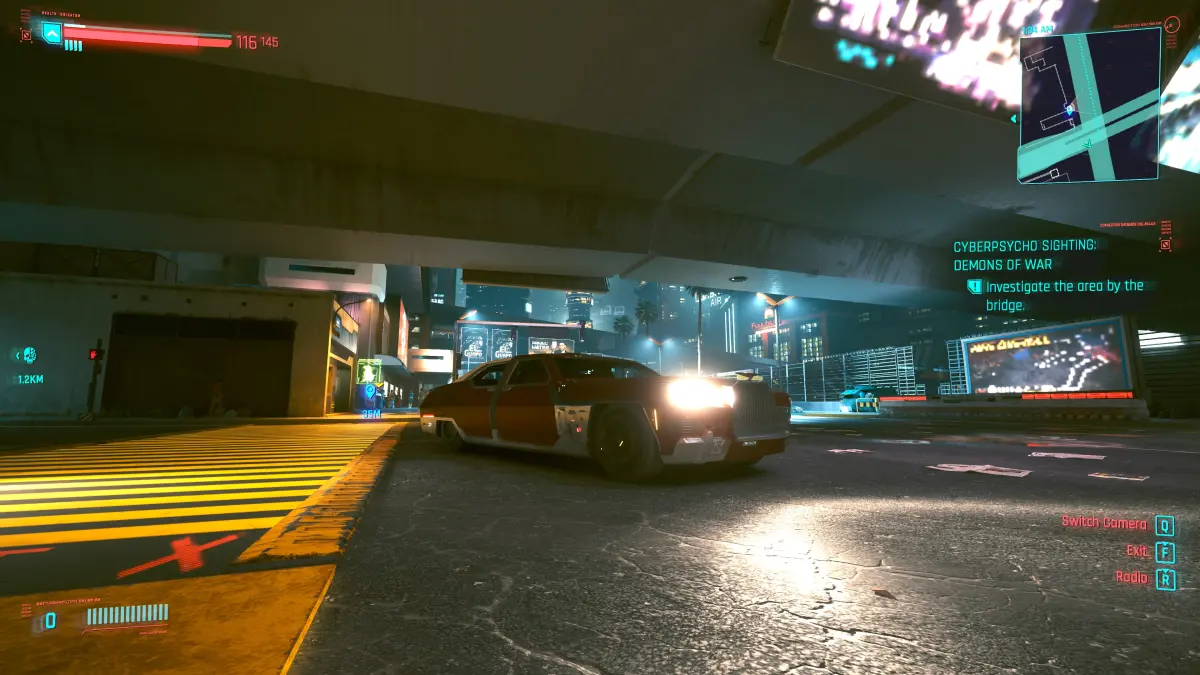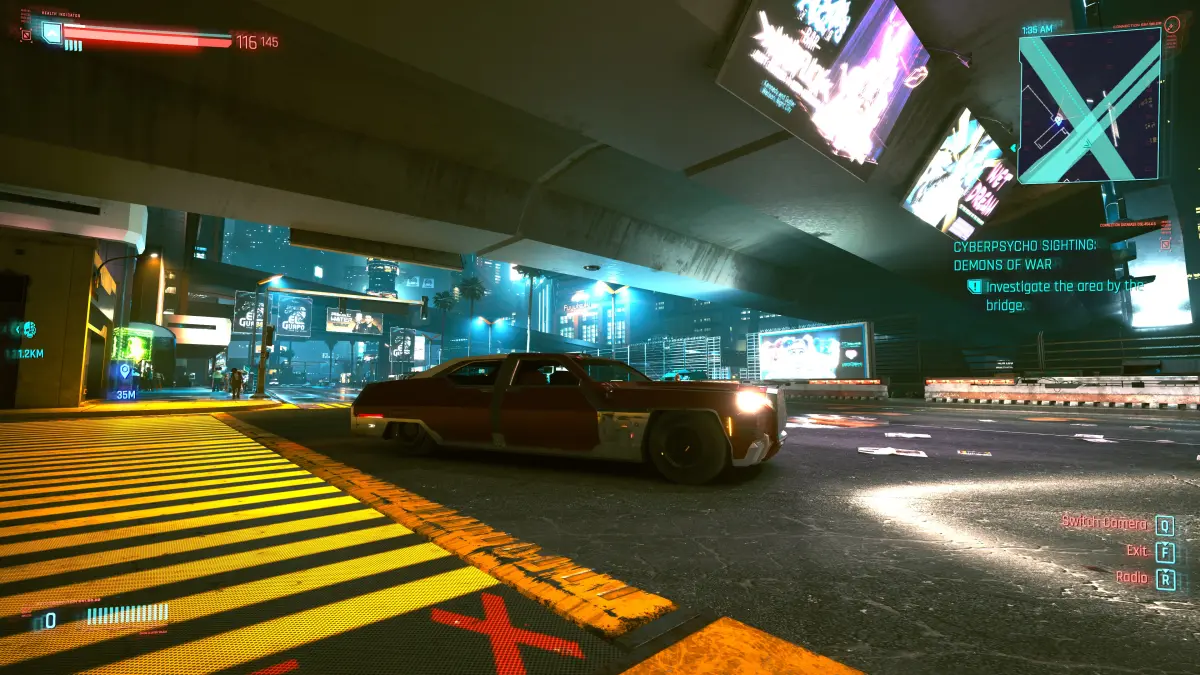The software played its role in helping the graphical processing hardware to leap forward in huge steps that would not have been possible without the integration of the two. It is hard to believe that video games have reached a stage where they can employ very advanced lighting technology such as Path Tracing in an open world game with the quality and detail of the Polish CDPR masterpiece Cyberpunk 2077. Of course, this ray-tracing technology works for all game lighting until only two light bounces, Yet it’s still a huge step forward for the gaming world, and it’s a reality thanks to Nvidia’s deep learning technologies.
DLSS 2 or Super Resolution technology
Yes, these technical leaps would not have been possible with playable performance without our DLSS (Deep Learning Super Sampling) technology, which uses tensor cores to reduce the real display resolution of the image and reduce the burden on the graphics processor. And upscaling the display using artificial intelligence, which uses data gained from training it on ultra-high-resolution images to compensate for the color information of the extra pixels, resulting in the final image. Now it’s time for the next leap and the next generation of technology.
How did the need for DLSS 3 come about?
Even this technology, in its second version, DLSS 2, may not have been completely sufficient to provide the required performance with ray tracing when using Path Tracing technology. Graphics cards needed another jump in performance to push ray tracing technologies forward more and more, hence the need for another technology. More advanced for Nvidia to finally launch DLSS 3, with its RTX 40 graphics cards with the Ada Lovelace architecture, which was produced with a 4-nanometer manufacturing precision from the Taiwanese company TSMC.
This technology is not available for previous generations of the company’s cards, and this is due to hardware improvements, including the Optical Flow accelerator and the improvements made to it. Running the technology is theoretically possible on RTX 20 and RTX 30 cards, but it may not achieve the required results due to the difference in architecture efficiency. Another observation from us is that the use of technology actually increases the consumption of video memory VRAM. The RTX 4090, RTX 4080, and RTX 4070 cards all support the technology, in addition to the RTX 4060 cards that will be on the market soon, and their price will start at $ 299.
What is DLSS 3 technology and how does it work
DLSS 3 technology is completely new and works in a completely different way than before, i.e. a player can enable only DLSS 2 in games or only DLSS 3, or both. The technology is based on 3 main characteristics:
- The first is Super Resolution, which is the well-known DLSS 2 technology, which, as we explained, depends on reducing the real display resolution, and raising the image resolution by processing it with artificial intelligence algorithms that fill in the missing color information for pixels based on training data on high-resolution images (16k). There are several settings: Quality which increases the resolution from 67% of the original resolution, Balanced which increases the resolution from 59% of the original resolution, and Performance which increases the resolution from 50% of the original resolution. Finally, there is Ultra Performance, which raises the resolution from 33% of the original display resolution.
Here is the following table to show the differences between these settings in 4K resolution depending on the image area scaling ratio (the number of pixels in length multiplied by the number of pixels in width):
| Raised display resolution | True display resolution | Accuracy boost ratio | Settings |
|---|---|---|---|
| 3840×2160 | 2560×1440 | 2.25x the area | Quality |
| 3840×2160 | 2259×1270 | 2.89x the area | Balanced |
| 3840×2160 | 1920×1080 | 4x the area | Performance |
| 3840×2160 | 1280×720 | 9x the area | Ultra Performance |
- The second is Frame Generation, which is the basic name for the technology in settings within games, and it relies on motion vector data in one frame and defines it through highly sophisticated algorithms in order to predict what the next frame might be, then the technology generates a full additional frame and adds it between two frames. Note that this additional frame is a dummy frame, so to speak, and cannot interact with the player’s instructions and buttons that he presses. the performance.
- The third is Reflex, a technology from Nvidia that relies on reducing response delay in games (Input Lag). Response time is the time it takes for the game to execute the player’s commands from the moment a controller is pressed to the game’s response and execution on the screen. NVIDIA has developed this innovative technology by synchronizing frames between the central processor and the graphics processor, where the central processor initializes the frames in a queue (Queue) for the graphics processor to use, and with Reflex technology, the transmission of frames is organized and this queue is abandoned, which leads to a reduction in response time rate that could be doubled. This technology works in conjunction with Frame Generation to reduce the negative impact on response lag caused by generating extra frames, but what is the end result? We analyzed performance without and with Frame Generation to find out.
Impact on performance and response time
Here is a comparison between different graphics settings for the Portal with RTX game that supports Path Tracing technology, in 4K resolution, using the RTX 4080 graphics card:
| Display resolution technology | frame rate | low tire 1% | Response time in milliseconds | The maximum number of bounces of the beam |
|---|---|---|---|---|
| nothing | 30 | 12 | 128 | 4 |
| DLSS 2 Performance | 52 | 32 | 35 | 4 |
| DLSS 3 Performance | 75 | 58 | 56 | 4 |
| DLSS 3 Performance | 76 | 56 | 52 | 8 |
As we note, the response time with DLSS 2 technology is the best. When Frame Generation is activated, the response time increases slightly, but both remain much better than the original display resolution without activating any kind of scaling technology. Regarding the gaming experience? In fact, I did not feel any difference in the smoothness of control between the two, except that I am not a professional in esports games, and perhaps professionals are more able to feel these differences in response time in games that support technology.
With regard to the increase in performance, we note that Frame Generation can provide another very large increase in performance, the increase in performance compared to activating DLSS 2 only reached 44%, and the increase in performance compared to the basic performance of the game without activating any technology to raise the resolution, may It reached 150%, which is a pretty huge increase. The game is not playable without activating the resolution raising techniques, and it is relatively acceptable with DLSS 2, but it finally breaks the barrier of 60 frames when using Frame Generation technology, but rather reaches 75 frames.
All games that support the technology
Currently, there are more than 50 games available or coming that support Frame Generation technology, among the most prominent of these games are names such as the expected Diablo IV, the French adventure game A Plague Tale: Requiem, the open world science-fiction game Cyberpunk 2077, and the beloved racing game Forza Horizon 5, Hogwarts Legacy, Marvel’s Spider-Man Remastered, and Microsoft Flight Simulator. Also, with Unreal 5.2, the Unreal Engine got a plugin to add the technology in games.
The technology is not available in all games, and there are big games that miss it like Resident Evil 4, where not all developers choose to launch exclusive technologies, but the adoption of the technology is faster than it was when the DLSS technology first launched as well, and it will obviously be supported in many Big releases and games.
Image quality when Frame Generation is enabled
Here comes the most important question for players, which is about the image quality when activating Frame Generation, and are there any noticeable negative effects? Well, when we tried the technology for the first time, we felt that the image was a little soft when activating the technology and not as sharp and clear without it, and we also noticed that there were negative effects on the image such as increased aliasing or the appearance of some strange shapes in games, but NVIDIA worked hard to improve the technology and upgrade At its level: Anti-aliasing has been significantly reduced in Cyberpunk 2077, and there are no more obvious negative effects on the image when activating the technology, except perhaps for some blur that appears on very fast moving objects. There are some drawbacks to the UI handling and the animated elements in some games will flicker on and off intermittently.
(With Frame Generation and Super Resolution enabled at Quality)

When the DLSS technology was first released, it was not perfect, and it continued to improve over time until some considered it better and higher quality than the real display resolution. We expect that the fate of DLSS 3 will be similar to it, the technology was not in the best condition when it was released, and after that I got an update that raised its level significantly, and I now use it and rely on it in very demanding games such as Cyberpunk 2077 to achieve the desired performance in 4K resolution, without I notice real negative effects on image quality. Atomic Heart suffers a bit from the negative effects of localized text for NPC dialogue, as it flashes (quickly disappearing and reappearing).
The last word
Frame Generation or DLSS 3 technology is a technology that works similar to motion interpolation techniques in TVs that have advanced processing power, and it launches a new frame between every two frames, and it is an advanced technology that relies on highly advanced and complex algorithms. Is the technique complete? No, you can’t exactly match the original without errors, but more importantly, reduce the visual negatives to a point where they are almost unnoticeable during gameplay, and Frame Generation is already successful at that.
We can say that artificial intelligence technologies in video games have made new strides with DLSS 3 and Frame Generation, and that before the release of this technology is not the same as after it, and thanks to the large additional boost in performance, the launch of advanced lighting technologies Path Tracing has become realistic and expected not only in Far future, but in the near future games.




